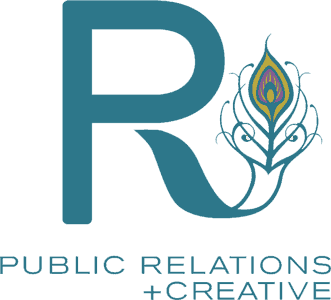It happens to the best brands—despite meticulous planning, a PR campaign doesn’t deliver the expected results. Worse, an unforeseen crisis derails all the hard work, putting your brand’s reputation at risk. When panic sets in, it’s easy to overreact emotionally, but in public relations, hasty decisions can do more harm than good. And trying too hard can make a brand look desperate. Emily Reynolds Bergh, award-winning public relations guru and founder of RPR Firm, reminds us that “Desperation is like a bad perfume—everyone notices.” Whether your strategy is struggling with a lack of media traction, a social media backlash or an internal PR crisis, keeping a cool head is the key to regaining control. Here are some PR best practices from Emily on what to do before you hit the panic button.

1. The number one PR best practice? Pause before you react
Your first instinct might be to fire off a response immediately, but acting out of frustration or fear can make things worse. Take a step back and assess the situation rationally. What’s the real issue? Is it a lack of engagement, a negative story or a misalignment between your message and your audience? Giving yourself a moment to breathe can prevent unnecessary missteps.
Ask yourself:
- Is this truly a crisis, or is it a temporary bump?
- Who is the audience affected by this issue?
- What is the likely outcome of responding versus staying silent?
- How will our brand be perceived based on our next move?
“Think before you act. You want your response to be measured, strategic and effective. This doesn’t mean ignoring the problem—it means responding with clarity rather than panic,” explains Emily.
2. Get the right people involved
You shouldn’t handle your PR crisis alone. Gather your internal communications team, key stakeholders and PR professionals to develop a strategic response. If you have an agency, lean on their expertise for PR best practices. The right messaging often requires input from multiple perspectives, ensuring you don’t overlook critical angles.
A great example of a team-driven response is how some brands use crisis response task forces—a designated group trained to handle PR challenges before they escalate. Even if your company doesn’t have a formal crisis team, knowing who to involve before a crisis happens ensures a smoother, more controlled response when the pressure is on.
Emily shares, “The key takeaway? In crisis mode, you don’t just need a voice—you need the right voices. Collaborating with a strategic team leads to smarter, more effective decision-making.”

3. Audit your messaging and strategy
If your campaign isn’t landing the way you expected, revisit your core messaging. Are you addressing your audience’s pain points? Is the timing right? Are you using the right platforms? A deep dive into your campaign analytics is one the PR best practices that can reveal whether the issue is with your message, your distribution channels or external factors beyond your control.
“If you’re dealing with negative press, determine whether a response is necessary. Not all criticism requires a rebuttal,” says Emily. Sometimes, letting the noise die down is the best approach. If a response is needed, craft a message that’s clear, empathetic and aligned with your brand values.
4. Avoid public displays of desperation
When things go south, resist the urge to overcompensate. Scrambling to push out more press releases, spamming journalists, or drastically changing your messaging mid-campaign can look erratic and insincere. Your audience can sense desperation, and that weakens credibility.
Instead, Emily suggests these PR best practices: “Be strategic and measured. PR is about relationships, and you don’t want to burn bridges by acting recklessly.” Take a step back, refine your strategy and move forward with confidence rather than panic.
5. Leverage owned media and brand advocates
If media coverage isn’t going your way, shift your focus to channels you control. Your blog, social media platforms and email marketing can help reframe the narrative. “Don’t overcomplicate your response,” says Emily. “A well-crafted statement from leadership, a behind-the-scenes look at how your company is handling a challenge or testimonials from satisfied customers can all shift the focus back to your brand’s strengths.”
Amongst other PR best practices is to lean on brand advocates—whether they’re customers, employees, or industry partners—to help amplify your message organically.

6. Learn from the experience
Every PR challenge presents a learning opportunity. Conduct a post-mortem:
- What went wrong?
- Were there red flags that were overlooked?
- What could be done differently next time?
Building resilience in PR means being able to pivot, adjust and improve. The best brands aren’t immune to PR challenges—they’re just better at handling them.
Final Thoughts
PR crisis mode can feel overwhelming, but the key to coming out stronger is maintaining composure, being strategic and refining your approach. Whether you rework your messaging, rely on owned media or simply know when to stay silent, handling crisis mode with confidence keeps your brand credibility intact.
As Emily wisely puts it: “Panic is contagious—but so is poise. Choose wisely.”
Connect with us today for more information about how RPR can help you respond (or not respond!) to a situation without going into PR panic mode.
